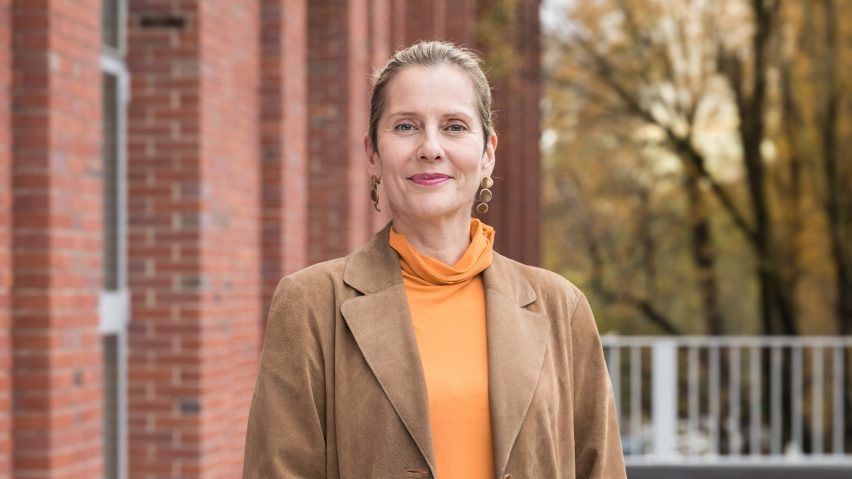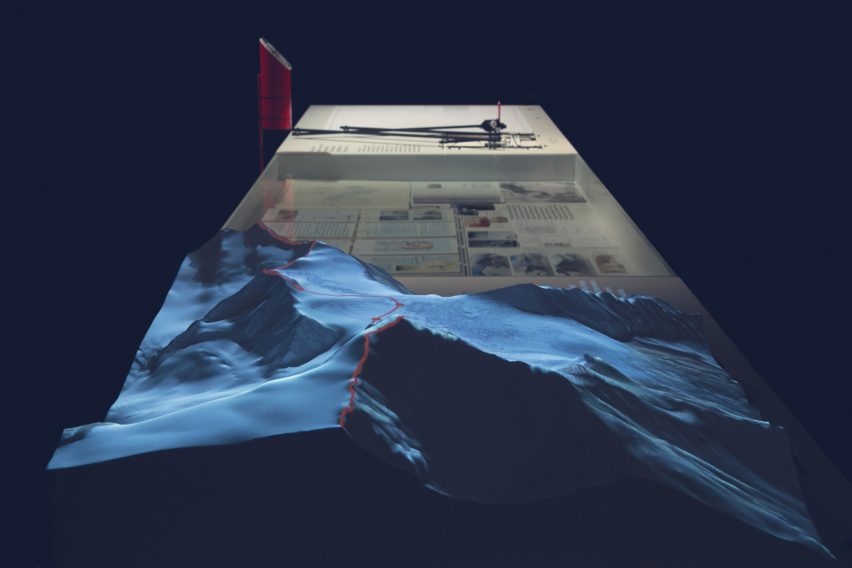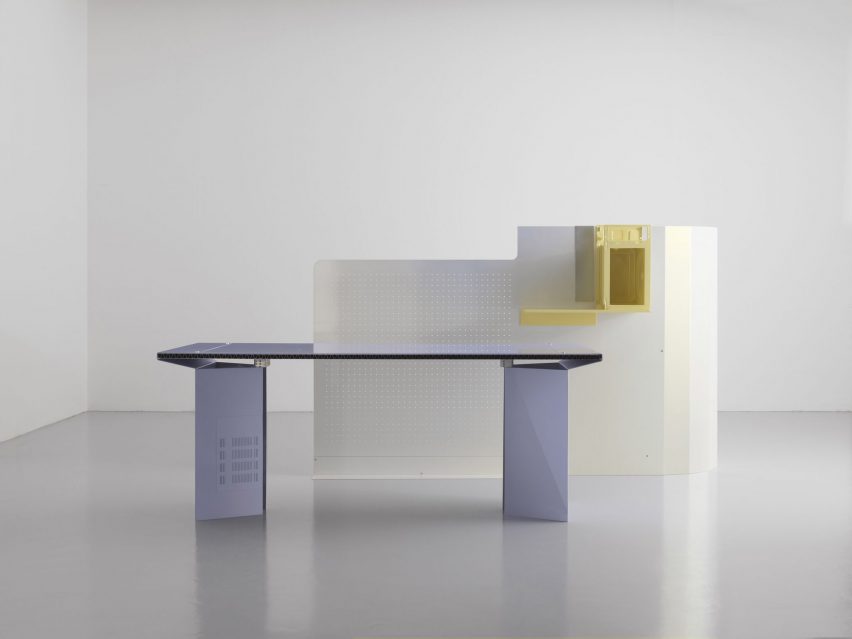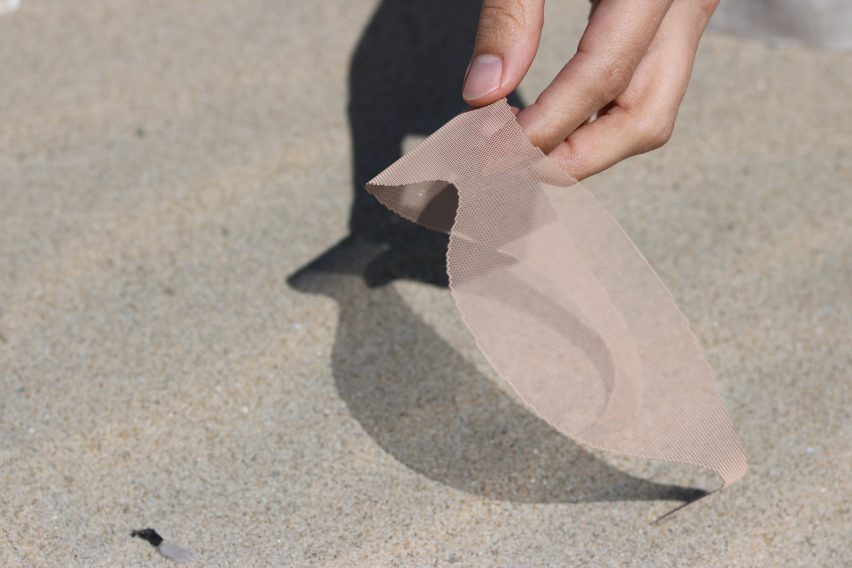
"We don't have the power to stop our extinction" says Paola Antonelli
Humans will inevitably become extinct due to environmental breakdown, but we have the power to design ourselves a "beautiful ending", says Paola Antonelli, who will next week open a major exhibition in Milan called Broken Nature.
Broken Nature: Design Takes on Human Survival, the XXII Triennale di Milano, will bring together 120 architecture and design projects from the last 30 years that explore humankind's fractured relationship with the planet.
The curator hopes it will make people aware of the "crisis in our humanity" – that our connection to our environment has been completely compromised, amidst an increase in extreme weather, wildfires and other environmental disasters around the globe.
"We will become extinct; extinction is normal, it's natural," she explained. "We don't have the power to stop our extinction but we have the power to make it count."
"Leave a legacy that means something"
Antonelli, who is also senior curator of architecture and design at MoMA in New York, insists that she's not trying to shock anyone. She instead wants to encourage designers, and everyone else, to make the most of the time they have left on the planet.
She claims that planning for the legacy of the human race is the same as planning for a person leaving their job, or when an elderly family member knows they are going to die. Only then will the next dominant species remember humankind with respect.

"I believe that our best chance is to design our own really elegant extension, so that we will leave a legacy that means something, and remains, in the future," she said.
"That means taking a very big leap in our perceptive abilities," she explained. "It means thinking really long-term, it means thinking at scale, it means really trying to understand that we are only one species on earth and one species in the universe."
Responsible design shouldn't mean sacrifice
The exhibition will include important milestones in restorative design, such as research project Italian Limes, which looks at shifting national borders as ice melts in the Alps, and SUN+, which seeks design alternatives to sun exposure.
Antonelli has also commissioned new projects that explore ways design could put humans back on a better path. Neri Oxman's contribution will see melanin – the pigment that produces skin tone – applied to architecture, while Formafantasma looked at new ways of upcycling waste.
The curator said changing our thinking requires us to think more deeply about design, and treat it with the same rigour applied to science. She said that, for too long, environmentally-friendly design has been seen as inferior.

"We always feel that for design to be ethical or responsible it has to sacrifice something. Usually the something that is sacrificed is the sensuality or the formal elegance. But it's not true," Antonelli explained.
"It's about design that has to do with the environment, with wasting less, with recycling more, with repairing things better and also with connecting to other human beings and to other species better," she said.
"Citizens are the true powerful agents in this change"
With the Milanese well-versed in design, Antonelli hopes the exhibition will be seen by more than just the design community. She hopes to engage a wider audience through the public programme, online platform and a catalogue of related essays.
"I believe that citizens are the true powerful agents in this change that needs to happen," explained Antonelli. "This is an exhibition for citizens. Of course it's for the design community. I always want things to be for the design community of course, but I also want it to be for the citizens."
Antonelli sees her role as giving people "stronger critical tools" that can be applied to "what they buy, what they use, how long they keep things for, when they throw them away". She thinks design can be "a Trojan horse" that gets into the mindset of a younger generation and provokes change.
"Without convincing children and their parents, and making it something that is asked of politicians and of corporations from the ground up, we will never go anywhere," she argued.
Politicians are ignoring environmental crisis
One thing Antonelli is keen to point out is that Broken Nature is not the only exhibition examining environmental issues.
Other examples include the Cooper Hewitt in New York's Nature exhibition that runs simultaneously at Cube design museum in Kerkrade, Netherlands, and the Eco-Visionaries show at the Royal Academy in London later this year.

Antonelli is frustrated that political leaders have been slow to respond.
"We're all working on this, artists, curators, writers, we're all trying our best. The only ones that are completely deaf are the powers that be that are supposed to legislate and help us put things in motion," she said.
Despite that, she believes that humankind is getting close to accepting its imminent extinction, as more exhibitions, television shows and news broadcasts start to focus on it.
"This is the beginning of people talking about the reality in a positive way," she added. "My ambition is for that statement to become normal."
The XXII Triennale di Milano runs from 1 March to 1 September 2019 at the Triennale Milano gallery. The Broken Nature exhibition will be shown alongside 27 installations from countries and institutions, including an entry from the European Union.
Read on for an edited transcript of the interview with Paola Antonelli:
Augusta Pownall: In the Broken Nature exhibition, there will 120 or so design and architecture projects from the last two or three decades. What argument are you making with these?
Paola Antonelli: The argument is that of restorative design, and reparations. Restorative design is very wide-ranging and I'm doing that on purpose as I'm hoping that people will come out of the exhibition with a feeling in their stomach rather than notions that they could write down in a notebook.
The idea goes back to the notion of restaurants. We always feel that for design to be ethical or responsible it has to sacrifice something. Usually the something that is sacrificed is the sensuality and the formal elegance, but it's not true. Restaurants were born in France in the 18th-century as somewhere that you could eat food that was good for your health, like bouillon, but also delightful and they rapidly became places for conviviality and pleasure. You don't have to sacrifice pleasure, delight, humanity, sensuality in order to be ethical and responsible and have a sense of both our position in the universe and also what we're doing to nature and other species. This is what the exhibition is about.
Augusta Pownall: Are there other themes that get pulled into the thesis of the exhibition?
Paola Antonelli: It's about design that has to do with the environment, with wasting less, with recycling more, with repairing things better and also with connecting to other human beings and to other species better. You could call it holistic even though that's a worn out term, but in truth it's about connecting, and it ends with empathy.
I am convinced because it's part of nature that things end and that species become extinct
Once again, when you have so much going wrong in the world, from injustice to poverty to disparity to the struggle for human rights, and also everything that's happening with the environment, there's various ways to go. Some of our leaders are demonstrating a way to go that is about entrenchment, and self-centredness and selfishness. The other way to go is the opposite, it's empathy and trying to connect with others in order to do better together. It really is about generosity of spirit.
What I always say when I talk about the exhibition is I sound so hopeful and optimistic but I do believe that we will become extinct. I believe that our best chance is to design our own really elegant extension, so that we will leave a legacy that means something, and remains, in the future. Because we will become extinct; extinction is normal, it's natural.
Augusta Pownall: You're sure that extinction is where we're heading. How should the design world react to that reality?
Paola Antonelli: I am convinced because it's part of nature that things end and that species become extinct. It's not design that will react in any certain way, it's human beings, the designers, more than design itself. So once again this exhibition is what designers can do, but there will be exhibitions and there have been several, that will be about what artists can do. Designers are human beings so their attitude is the same as it should be for others. Don't panic, but let's see how we can design a better legacy.
Augusta Pownall: It's a bold statement. What has the reaction been?
Paola Antonelli: The fact that we will become extinct is being advanced by so many different people, scientists amongst others. If anything the bold statement is the hopeful one, that we can design a beautiful ending.
Some people are taken aback but very few people tell me that I'm being pessimistic. That might be their first reaction but then they think about it further. So in a way I'm not saying anything new in that part of the phrase, maybe the second part of the phrase is the one that takes people aback, because that's where we have the power. We don't have the power to stop our extinction but we have the power to make it count.
Augusta Pownall: What's your vision of a beautiful ending?
Paola Antonelli: I can go completely into science fiction, but I just see it as the beautiful death of a human being, surrounded by family, in a serene way. Understanding that one's life ending means that someone else's life is beginning or continues. I would put it at the scale of the life of a human being. Someone's grandmother said something beautiful once to me. So many of us think that it's not fair that you die and life continues. She said to me, just think of it as you being at a great party and you go upstairs and take a nap. The whole universe is having a party and we're taking a nap, and hopefully the people downstairs at the party will miss us. Once again, perspective.
My ambition is for this statement to become normal. My ambition is not to shock
So I would see our ending the way we see an individual's ending. Serenity, a big family, good memories and having had a positive influence on humanity. People will have reactions of all kinds to what I'm saying and that's ok, because this is the beginning of people talking about the reality in a positive way. I'm just going to be a jackhammer and hopefully people will make it become normal. My ambition is for this statement to become normal. My ambition is not to shock. I think this will happen with this and other exhibitions. And also on television and during news broadcasts. There's just a groundswell of people that think this and want to share their thoughts.
Education and awareness – I think this exhibition is really about that.
Augusta Pownall: Are we getting to the tipping point, where people will start to see extinction as normal?
Paola Antonelli: I think so. I don't know if I can speak in such general terms. What I see is a kind of denial on the part of many political powers and awareness by many others and by citizens. Sometimes right now, even science is doubted. If we are in the situation in which even what scientists say is denied, we are in grave danger. But I think we're going to reach that groundswell, really soon, I really hope so. I'm trying my little bit.
Augusta Pownall: So what can we do to design for our extinction?
Paola Antonelli: The exhibition is one small part of a change of culture that should happen. I am never presuming that we will have the answers for everything, but it would already be very successful if we were able to at least point out something which is very necessary, and that's to think of our own legacy. That's what always happens when an editor-in-chief is leaving, or a person knows when he or she will die, we think of legacy. So we should think of legacy also for the human race.
That means taking a very big leap in our perceptive abilities. It means thinking really long-term, it means thinking at scale, it means really trying to understand that we are only one species on earth and one species in the universe. And very simply, as if we were putting together a beautiful play or a beautiful piece of art or design, we should really make it count and make it memorable and meaningful.
The reference we always use is Powers of Ten, the Charles and Ray Eames videos. If we were to really go up so many powers of 10 and another species in the future were able to zoom down, what would we want them to find?
Augusta Pownall: Are there any particular parts of the exhibition that point towards what we can do to design for the end?
Paola Antonelli: Nothing in particular, because I didn't want to have much speculation or science fiction. So everything is in that direction but nothing is grandly or spectacularly about the ending. For instance, Kelly Jazvac's Plastiglomerate and the fossils of the future, that's almost a negative example of something we don't want to leave behind. Or when instead you look at the Alma Observatory's Music of a Dying Star, that offers the sense of the long-term and perspective.
Clearly there's a crisis in humanity, in the sense of what it means to be human
Everything is about prepping ourselves for it, and nothing is about what we should do. Because that wouldn't be about design, that would be more literature and art. Maybe some people will do that, but I think it's such a daunting idea, that of trying to portray our ending, so I'd like to see who's going to do that. I don't think it can be prevented but it definitely can be managed.
Augusta Pownall: What do you think are the pressing problems that designers should addressing?
Paola Antonelli: Designers are about life and about the world and therefore they're very much in the present and also directed towards the future, if they're doing their job. The present is, and we hear it every single day, about this crisis of understanding of our position in the world and in the universe, a crisis that has to do with the environment and also with social bonds. It really is amazing what's going on politically in our countries, in all my countries Italy and the US and in the UK and in many other places. Clearly there's a crisis in humanity, in the sense of what it means to be human in connection with other humans and in connection with the universe. Of course I'm taking it at a very large scale, an almost cosmic perspective, but that translates in everything from cosmic perspectives to everyday lives. That's the thesis, the underlying theme of the exhibition.
Augusta Pownall: Do you think that design should be accorded as much respect as science?
Paola Antonelli: It's not about demeaning science but rather about elevating design. Science has been able to create this great mystique about itself. A very rightful mystique over the centuries about exactitude and worthiness. Of course now it's been put in discussion by the political powers that be that try to undermine that kind of faith and trust. So science has been able to build faith and trust in itself.
Design is very worthy of trust in most cases. Of course design can go wrong, just like science can go wrong and we've seen it many times. But it's never been able to project the gravitas and the kind of peer pressure that science has created for itself. People care about design a lot but they are not trained to seek design as a fundamental ingredient of their cultural makeup.
Augusta Pownall: So do you see this exhibition as a call to arms for designers, or is it more for the general public?
Paola Antonelli: This is an exhibition for citizens. Of course it's for the design community. I always want things to be for the design community, but I also want it to be for the citizens. I want this exhibition to really be inspiring for citizens so that people can leave it having a sense of what they can do in their everyday life.
I'm hoping that people that are not necessarily in the design world will go there, appreciate design as always and leave with a seed in their mind of what they can do in their real life to have a different attitude towards the environment, towards other species, towards our subsistence on planet Earth, towards all the important matters that we read about in the press all the time but sometimes don't get into our stomach. I really think that design can be a Trojan horse for people to really understand. I also believe that citizens are the true powerful agents in this change that needs to happen. Governments and corporations and institutions say and legislate, but citizens are the ones that can really put pressure on.
Augusta Pownall: Is there anything that people coming to the exhibition should be thinking about when it comes to alleviating the damage we have caused to the environment?
Paola Antonelli: Just thinking of it would be enough. I would love for people to leave the exhibition with even more of a sense of the aberration that single-use plastic is, but I'm not only talking about straws that have become the pet peeve, I'm talking about so much more.
In general, single-use plastics should be avoided at all costs. Not plastics, because plastics have some advantages, it's just about being mindful of every single thing. That is design. One thing that curators and people like me try to do is to show people what's behind objects, because we're used to taking objects at face value. I have in front of me a pencil. It's wood and inside is graphite, and just understanding where it comes from can give you more pleasure in understanding reality and more knowledge and awareness of what you can do to avoid wasting.
I cannot say that I'm optimistic or positive, I'm just doing something
That's my role, to give people stronger critical tools to act on the part of life that I have some say over, which is design, which means what they buy, what they use, how long they keep things for, when they throw them away. Another thing is the fast-fashion campaign, I mean it's horrible. There are many examples, but that's where my field of action is.
Augusta Pownall: You mentioned that you want the the exhibition to have a positive outlook, even if it's not always saying hugely positive things about humankind. Is that possible, given the horrifying things that we're hearing about our climate?
Paola Antonelli: I'm not optimistic per se, I'm just trying to energise. I believe that citizens are the only ones that can change things. I am hoping that efforts like mine... and mine is just one, luckily there are so many curators working on this, will make a difference.
Cooper Hewitt has just been doing an exhibition about nature, the Serpentine just hired a curator for these matters. There are so many people working on this. We're all working on this, artists, curators, writers, we're all trying our best. The only ones that are completely deaf are the powers that be that are supposed to legislate and help us put things in motion.
I cannot say that I'm optimistic or positive, I'm just doing something. I believe that it's a very "design" attitude of knowing your constraints and trying to make the best of those constraints. You can say that art is spilling over those constraints, or should, and design does too, but I believe we're all trying to sensitise and create a reaction of which we will be a part. Without convincing children and their parents, and making it something that is asked of politicians and of corporations from the ground up, we will never get anywhere.